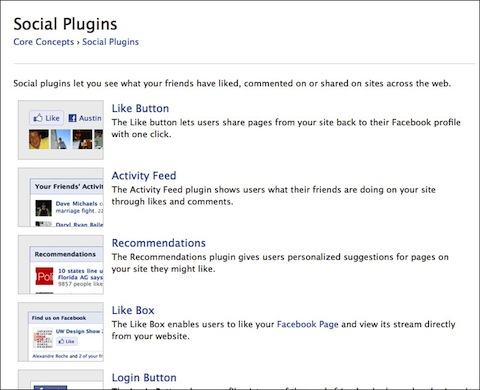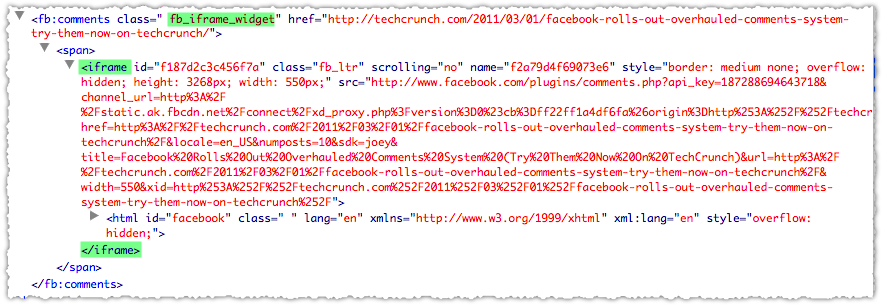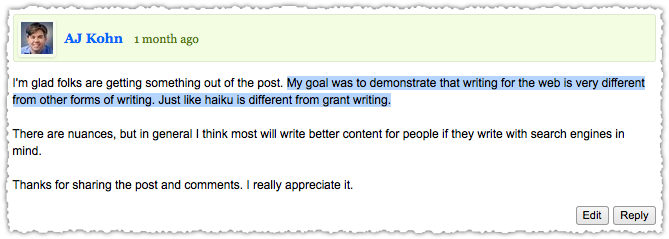This post reflects the opinions of the author and not necessarily those of Mashable as a publication.
 Steven Rosenbaum is a curator, author, filmmaker and entrepreneur. He is the CEO of Magnify.net, a real-time video curation engine for publishers, brands, and websites. His book Curation Nation from McGrawHill Business was published this week.
Steven Rosenbaum is a curator, author, filmmaker and entrepreneur. He is the CEO of Magnify.net, a real-time video curation engine for publishers, brands, and websites. His book Curation Nation from McGrawHill Business was published this week.
The personal web publishing boom has led to an information explosion. It’s a data free-for-all, and it’s just beginning. Andrew Blau is a researcher and the co-president of Global Business Network in San Fransisco. Blau has foretold the changes in media distribution and content creation. Now he’s watching this new, historic emergence of first-person publishing.
Today, publishing tools have been set free, Blau says. Cost, ownership, and barriers to entry are all gone, almost overnight. “The ability to amplify one’s voice, to amplify that beyond the reach of what we have had, reflects a change of course in human history.†He pointed to the difficultly of sorting through the riot of voices online. What that chaos needed was curation — a way to get value out of the information flood. But the role of the curator has been a contentious one, and not everyone has been on board with the concept.
Who Gets Heard?
All big changes have unintended consequences. Blau says that the old problem — limited access to the tools to amplify speech — has been fixed by the Internet. It used to be that making and moving information was so expensive that the question of who was going to get permission to speak was a central social and political issue. But now speech is more democratic.
That development, not surprisingly, creates a new problem. “The problem is who gets heard,†Blau says. “The real issue that remains is access to an audience. Because that’s hard. Access to technology has become trivially easy for most people in the industrialized world, and increasingly easy for people in the emerging economies around the world.â€
Blau is right: Speech is easy. Being heard is hard and getting even harder. Computers can’t distinguish between data and ideas or between human intellect and aggregated text and links. This lack of aesthetic intelligence in a storm of data changes the game.
Are Content Aggregators Vampires?
Okay, let’s get this part out in the open: Creators don’t like coloring inside the lines. They’re fueled by a passion to make original work. But there’s a reason why painters don’t rent a storefront, hire a staff clad in black clothing, and throw endless cocktail parties with white wine and fancy hors d’oeuvres. That’s called a gallery, and a gallery owner is a curator. These are the people who enjoy the process of choosing what to hang, how to price it, and how to make sure painters have enough income to pay the rent and buy more paint and canvas. Hopefully.
The web doesn’t work that way. At least not yet. The folks who run the online galleries — the curators — aren’t asking permission or giving a revenue share, which means that content creators need to get comfortable with the idea that in the new world of the link economy, curating and creating aren’t mutually exclusive. Exhibit A: Seth Godin. He is one of the web’s best-known marketing wizards. He’s a speaker, author, website owner and entrepreneur. And he says that content creators can’t ignore curation any longer.
“We don’t have an information shortage; we have an attention shortage,†Godin said. “There’s always someone who’s going to supply you with information that you’re going to curate. The Guggenheim doesn’t have a shortage of art. They don’t pay you to hang paintings for a show — in fact you have to pay for the insurance. Why? Because the Guggenheim is doing a service to the person who’s in the museum and the artist who’s being displayed.â€
As Godin sees it, power is shifting from content makers to content curators: “If we live in a world where information drives what we do, the information we get becomes the most important thing. The person who chooses that information has power.â€
This change is leaving folks who used to control distribution with less power to dictate terms. One of those folks is Mark Cuban. Cuban is a content creator. Or, more accurately, he owns assets that create branded content. He owns the Dallas Mavericks. He owns Magnolia Pictures. He owns HDNet. And he’s got a stake in a whole bunch of other stuff.
“The content aggregators are vampires!†said the always colorful Cuban. “Don’t let them suck your blood.†Cuban points to sites like Google News and The Huffington Post as the most aggressive content criminals. He tends to see no value in folks who gather, organize, summarize, or republish. He only finds value in content creation: “Vampires take but don’t give anything back.â€
Not surprisingly, Godin wrinkles his nose at Cuban’s vampire metaphor. Simply put, he says it’s all wrong. “When a vampire sucks your blood, you make new blood,†Godin says. “The thing about information is that information is more valuable when people know it. There’s an exception for business information and super-timely information, but in all other cases, ideas that spread win. I’m not talking about plagiarism; I’m talking about the difference between obscurity and piracy. If the taking is so whole that the original is worth nothing … that’s a problem.â€
Robert Scoble also disagreed with Cuban’s horror-movie metaphor. “That’s ridiculous. Cuban is fun to argue with, but it’s ridiculous. I mean come on, The New York Times is an aggregator of a thousand people’s work. More than that if you include letters to the editor, opinions, and guest posts and contracted posts and contracted articles. The New York Times has been doing aggregation for a hundred years. To say that’s a vampire is just totally ridiculous.â€
The Billion Dollar Opportunity

Scoble has declared curation as the next “billion dollar†opportunity and wonders aloud as to whether he should “create or curate†as tech news breaks in Silicon Valley. Scoble says a curator is “an information chemist. He or she mixes atoms together in a way to build an info-molecule. Then adds value to that molecule.â€
“I used to drink from the real-time fire hose, because on the social web, everything was about real time,†says Brian Solis, author of Engage. “Then I realized over the years that it’s actually more about right time than real time. In fact, when information comes through, it doesn’t necessarily mean that that’s the right time to engage, capture it, and share it. I’m more successful now creating a list of information, relevant information, and then repackaging, repurposing, and broadcasting that information at the right time.â€
Getting people to pay attention to you — by following, friending, linking, or otherwise engaging — will have real economic value, says communications consultant and author Chris Brogan. “Attention is a currency, just like many others. We understand time and money as two interchangeable things. But attention is just as much something that needs to be arbitraged and disconnected from a 1:1 value. Said another way, ‘Attention costs me time and time is worth money, so attention by extension is worth money.’ â€
Conclusion
Data will be created with staggering speed, and systems will need to evolve to find, gather, and package data so that you can get what you need, when you need it, in coherent and useful bundles.
Curation taps the vast, agile, engaged human power of the web. It finds signal in the noise. And it’s most certainly going to unleash a new army of web editors armed with emerging curation tools.
Images courtesy of iStockphoto, flyparade and Flickr, epSos.de
More About: content, curation, journalism, social media
For more Social Media coverage:

















































